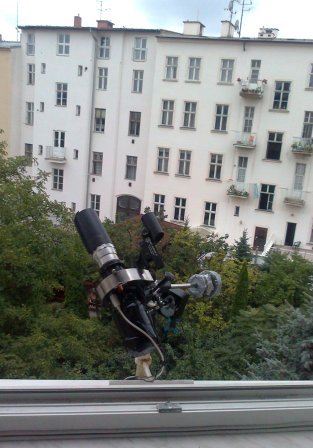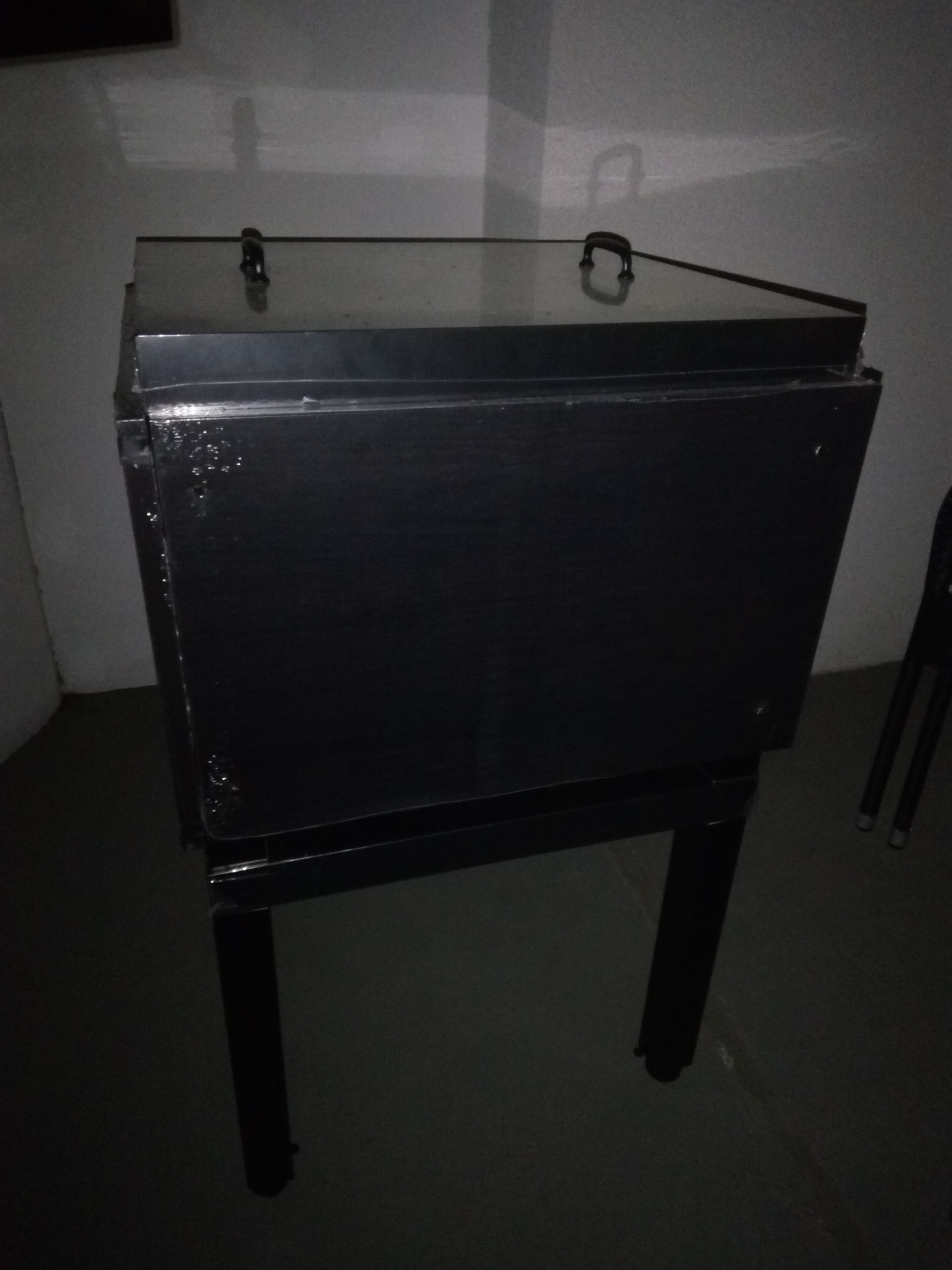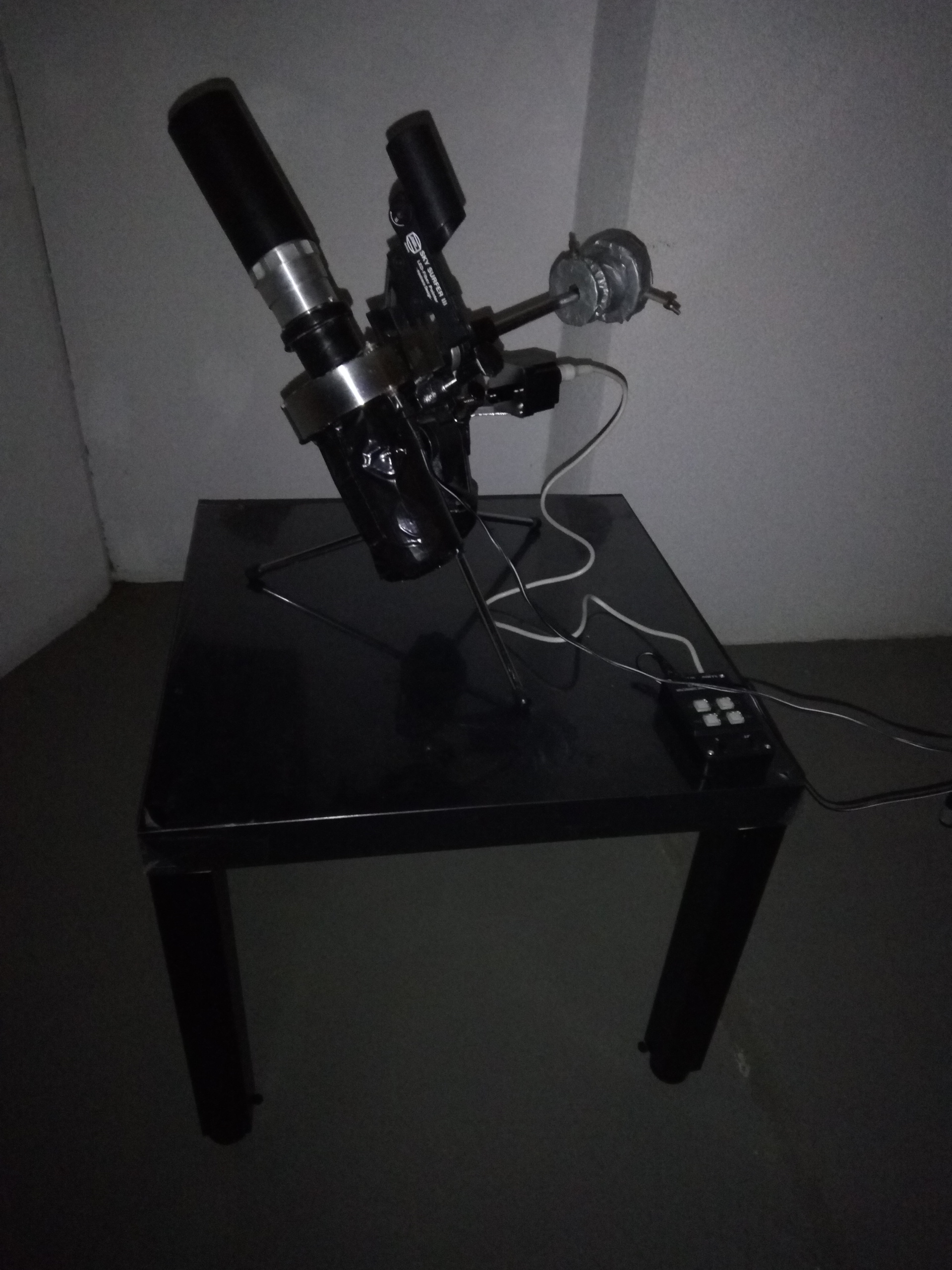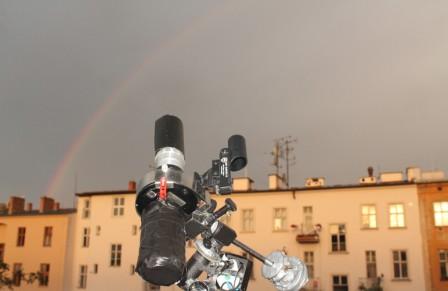

|
Private Observatory BrnoIntroduction and historyIdea about own observatory occured in spring 2010 when I returned from SAAO, South Africa. Since April 2010 I have already constructed first prototype of the small and easily transportable telescope Malokuk-1. The telescope consisted from photo lens, small CCD camera, and simple equatorial table mount (the name "Malokuk" comes from Czech astronomers using Sky-Watcher 80/400 telescope usually with this table mount). 
My observing strategy was: 1) Make observations in each clear night 2) The telescope should be cheap (small student project) 3) Each night preparation of observing equipment should take the least possible time 4) The telescope should be controlled each 2 hours in maximum 5) Each morning after observation I should be able go to University to work Therefore the Observatory was built as "window observatory". The telescope was placed on the pier that was fixed on the hole from the old removed heating (small horizontal chimney under the window). When the observing conditions look good I pull out the telescope through window and prepared observations. It usually took several minutus including cooling CCD chip. The Observatory in Veveri street was closed in September 2014, when the new heating was installed and the hole was again used as chimney... I have to stop my observations. Private Observatory Brno 2 = FOX Observatory

Continuing in observations (now just fully amateur astronomer)Since the December 2016 I started to make observations in the new location in Brno - Bystrc. Newly it is a "balcony observatory". It is known, that comfort is very important, therefore I built a small dome for the telescope (installed in July 2018). Malokuk telescope is now available on balcony under wooden cover and I can start with the observation very easily and quickly (within good condition). Just for the fun - the dome consists from 2 IKEA tables standing on their own. The upper table (cover) is covered by 4 wooden shelves from four sides. Two handles are attached on the top side. The mount of the telescope is oriented on the north for whole time in this setup. Recently I am using the Malokuk-2 instrument, however, without photometric filter. 
Equipmento Malokuk-1, photo lens Helios 2/58 mm (diameter 29 mm), german equatorial mount EQ-1 Table Top, ATIK 16 IC (blue, red, green, y) o Malokuk-2, photo lens Sonnar 4/135 mm (diameter 34 mm), german equatorial mount EQ-1 Table Top, ATIK 16 IC (blue, red, green, y) o Malokuk-3, photo lens Tessar 2.8/50 mm (diameter 18 mm), german equatorial mount EQ-1 Table Top, ATIK 16 IC (blue, red, green, y) o Malokuk-4, photo lens Helios 2/58 mm (diameter 29 mm), german equatorial mount EQ-1 Table Top, G2-0402 MII (BVRI) o Malokuk-5, photo lens Jupiter 3.5/135 mm (diameter 39 mm), german equatorial mount EQ-1 Table Top, G2-0402 MII (BVRI) Interesting resultso Var1 Mon = TYC 5397-1029-1 - possible new eclipsing binary (discovery night 22nd January 2017), confirmation is necessary o TU UMa - photometry of the pulsating RR Lyrae star (binary candidate) - phase light curve (16 nights), maxima timings (7) → Liška, J., Skarka, M., Mikulášek, Z., Zejda, M., & Chrastina, M., 2016, New analysis of the light time effect in TU Ursae Majoris, A&A, 589, A94, 2016A&A...589A..94L, data in 2016yCat..35890094L o AT Ser, SS Leo, RS Boo - photometry of the pulsating RR Lyrae stars (binary candidates) - maxima timings (AT Ser - 4, SS Leo - 3, RS Boo - 3) → Liška, J., Skarka, M., Zejda, M., Mikulášek, Z., & de Villiers, S. N., 2016, Cyclic variations in O-C diagrams of field RR Lyrae stars as a result of LiTE, MNRAS, 459, 4360, 2016MNRAS.459.4360L → Skarka, M., Dřevěný, R., Auer, R. F., Liška, J., Mašek, M., Hoňková, K. Juryšek, J., Hladík, B., & de Villiers, 2015, Maximum times of RR Lyrae stars, Open European Journal on Variable Stars, 174, 1, 2015OEJV..174....1S o CzeV615 Ser - discovery of eclipsing binary star (12 nights, June - August 2014) → Liška, J., & Lišková, Z., 2014, CzeV615 - a new eclipsing binary, Information Bulletin on Variable Stars, 6124, 1, 2014IBVS.6124....1L → Skarka, M., ... , Liška, J., et al., 2017, CzeV - The Czech Variable Star Catalogue, Open European Journal on Variable stars, 185, 1, 2017OEJV..185....1S o CzeV502 Leo - discovery of flaring dMe star, 2 flares (22/23 February 2012, 19/20 March 2013), monitoring in 58 nights (2012 - 2013) → Liška, J., Hudec, R., Mikulášek, Z., Zejda, M., & Štrobl, J., in preparation → Skarka, M., ... , Liška, J., et al., 2017, CzeV - The Czech Variable Star Catalogue, Open European Journal on Variable stars, 185, 1, 2017OEJV..185....1S → talk: Liška, J., Hudec, R., Mikulášek, Z., & Zejda, M., X-ray source in flare (discovery of the new eruptive dwarf), 2013 April 25, IBWS - 10th INTEGRAL/BART Workshop, Regional Library, Karlovy Vary, Czech Republic → talk: Liška, J., Mikulášek, Z., Zejda, M., & Hudec, R., Objev nového eruptivního trpaslíka, 2012 November 4, 44th Conference on Variable Stars Research, Brno Observatory and Planetarium, Brno, Czech Republic o CU Vir - photometry of the chemically peculiar star (2014 - 12 nights) o FO Vir, V1010 Oph - photometry of the contact binary systems (2012 - 10 nights for each object) o HD189733 b - photometry of the star with transiting exoplanet → Liška, J., ETD, 2011 October, ETD record AcknowledgementsJL is very grateful to Zdeněk Liška and Pavel Wilk for their help with the compilation of the Malokuk telescope. JL is very grateful to Bohuslav Hladík for his big gift - single axis stepper motor tracking system for EQ1 with the hand box. Many thanks belong to Miloslav Zejda for his advices and DTPA MU for borrowing photometric filters and G2 camera. Experiences with the similar small-sized telescopes from other astronomers (e.g. from czech Astroforum) were also very useful. Last updated - 2019, January, 5 |